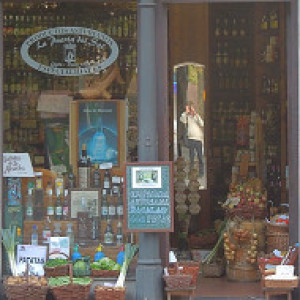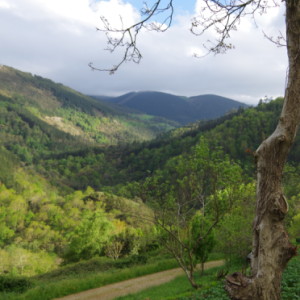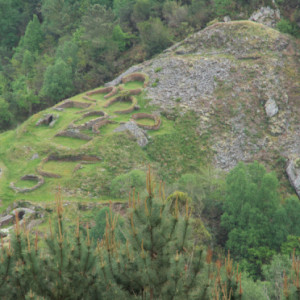Asturias occidente
Dropped daughter and flatmate off at Vegadeo in the far west (occidente) of Asturias this afternoon, from where they catch a bus back to Lugo in Galicia.
I decided that for the return journey to Gijón, instead of belting back east along the coastal motrway, I would instead keep inland for part of the distance, hading due east, and mainly up hill, from Vegadeo to Boal (Bual in the local 'fala' dialect) before heading up to the coast to join the motorway at Navia.
There was actually some sunshine in the far west of Asturias, which made for some vibrant views.However somewhere between Vegadeo and Bual I entered low cloud and came across this site.
The sign is pointing towards a large granite boulder, precariously perched on a very small fulcrum. The name 'Penedo aballar' means something like 'moving stone', again in the local dialect. It is thought to have have been of special significance in pre-roman times. This was also the site of megalithic tombs and tumuli. At least it was sitting on its precision perch from time immemorial, until quite recently, when it fell off!
Further on, past Bual and on the road to Navia, there is a magnificent view of the relatively well preserved remain of an iron age settlement, the Castro de Pendia, perched on the opposite side of a valley. Further on still, the road to Navia passes through the village of Coaña, the site of a much larger iron age settlement, although by this time it was getting dark so I'll re-visit another time.
I had mixed feelings about the blipoto's new 'Extra Photo' feature, but on this occasion I can't resist using it for a couple of today's other shots.
For the main blip I'm using the sign because I like the weathered wood, and I especially like lichen. I think lichen, especially the long dangling variety, flourishes in the Asturias occidente. This may be because of the region's remoteness from pollution and frequent ground level cloud to keep it moist. I have seen a grove of trees, not all that far from this site, where clumps of lichen perhaps two feet long hang from the branches.



Comments
Sign in or get an account to comment.


